13 Local Desserts You Shouldn’t Miss While Traveling Abroad
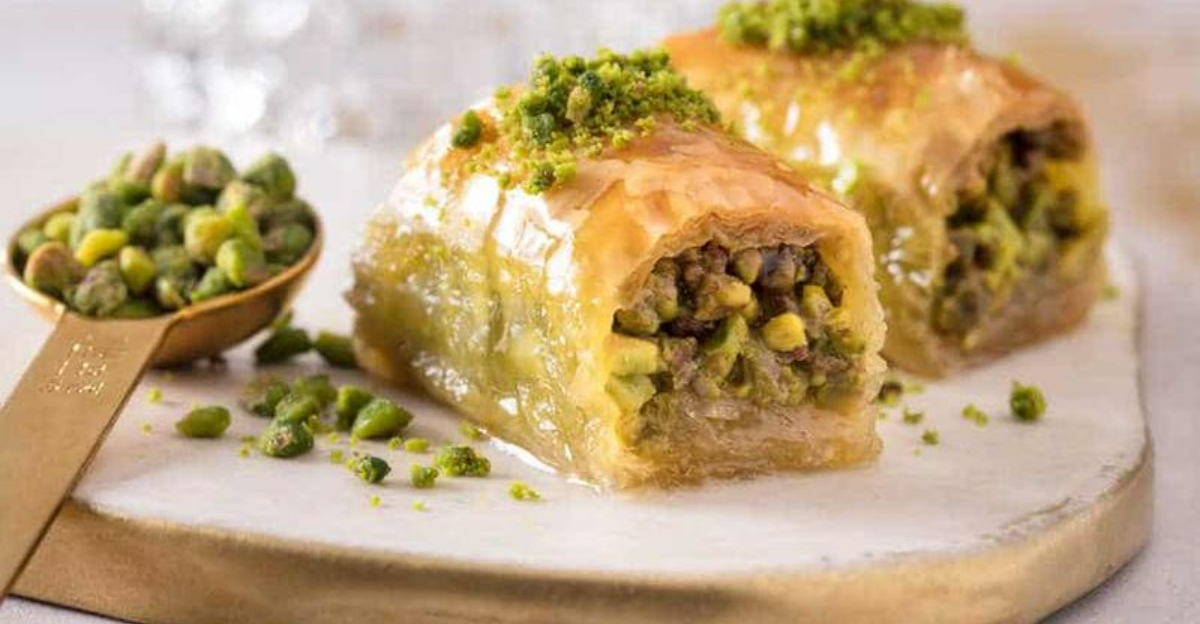
Traveling isn’t just about seeing new places, it’s also about tasting them! Sweet treats around the world offer a delicious window into local cultures and traditions. From creamy Italian gelato to flaky French pastries, each country’s desserts tell a unique story of its history and people.
Join me as we explore 13 must-try desserts that will make your travels even sweeter.
1. Gelato in Italy
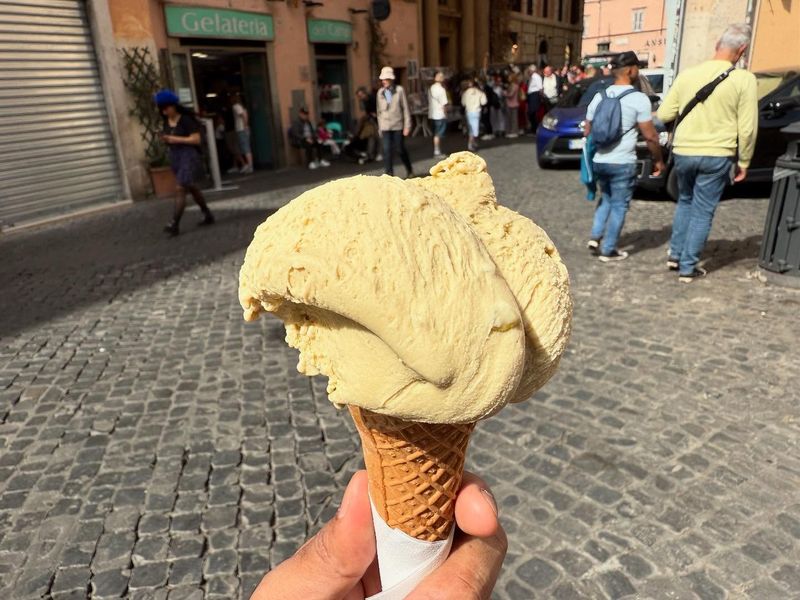
Ever wondered why Italian gelato tastes so different from regular ice cream? The secret lies in its lower fat content and warmer serving temperature, which intensifies the flavors.
Wandering through Rome or Florence, you’ll find gelaterias on almost every corner. My favorite flavors include pistachio, stracciatella, and the refreshing lemon sorbet.
Locals usually enjoy their gelato in the evening during a passeggiata (evening stroll). For the authentic experience, skip the touristy shops with mountains of brightly colored gelato and look for places where the containers are flat with lids.
2. Pastel de Nata in Portugal

Portugal’s famous custard tarts have stolen my heart with their flaky pastry shells and caramelized tops. The original recipe dates back to the 18th century, created by monks at the Jerónimos Monastery in Lisbon.
When I bit into my first pastel de nata at Belém, the warm custard filling practically melted in my mouth. A light dusting of cinnamon on top adds the perfect finishing touch.
For the best experience, arrive early at the famous Pastéis de Belém bakery to avoid the long lines. Most Portuguese enjoy these treats with a strong espresso as a mid-morning snack.
3. Mochi in Japan
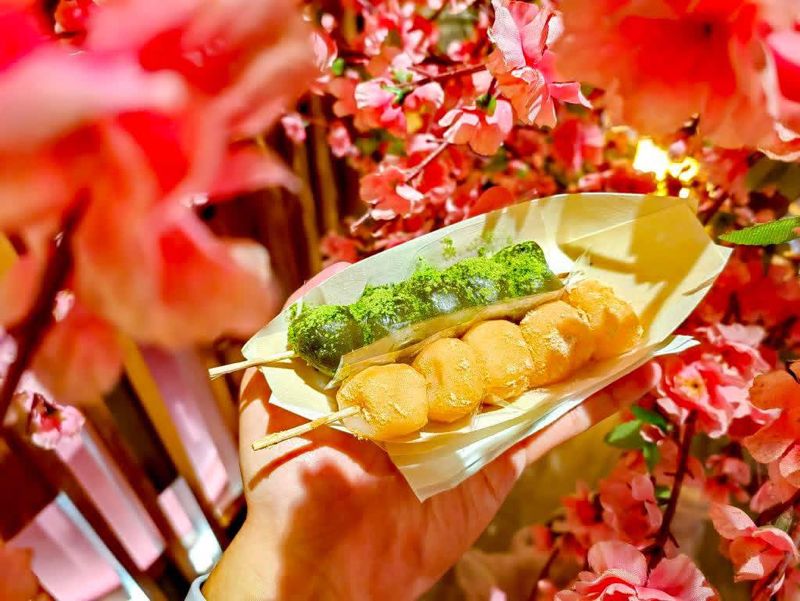
Soft, chewy, and utterly addictive – Japanese mochi has a texture unlike anything else I’ve tried! These sweet rice cakes come in countless flavors and colors, from matcha green tea to sweet red bean.
During my trip to Kyoto, I watched skilled artisans pound sticky rice into the perfect consistency. The traditional process involves rhythmic teamwork that’s as impressive as the final product.
Modern versions often include ice cream fillings, but I recommend trying the traditional varieties first. During Japanese New Year, special mochi called kagami-mochi are displayed as decorations before being eaten for good luck.
4. Baklava in Turkey
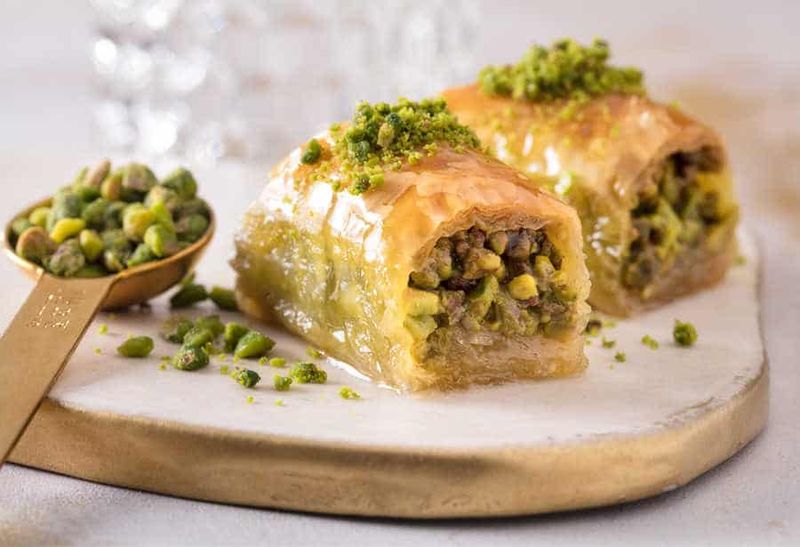
Layers upon layers of paper-thin phyllo dough, chopped nuts, and sweet honey syrup make Turkish baklava an unforgettable treat. My first taste in Istanbul’s Grand Bazaar left me speechless – the perfect balance of crunch, sweetness, and nutty flavors.
Turkish families often prepare baklava for special occasions and religious holidays. The best shops use pistachios from Gaziantep, a region famous for growing the world’s finest.
If you’re trying baklava for the first time, pair it with strong Turkish coffee to balance the sweetness. The contrast between bitter coffee and honey-soaked pastry creates a perfect harmony of flavors.
5. Churros con Chocolate in Spain

Nothing beats starting your morning in Madrid with crispy, sugar-dusted churros dipped in thick hot chocolate! This Spanish breakfast tradition has become my favorite way to fuel up before sightseeing.
The contrast between the crunchy exterior and soft interior of freshly fried churros is simply magical. Unlike the carnival versions I grew up with, authentic Spanish churros aren’t overly sweet – that’s what the chocolate is for!
Many historic chocolaterías in Madrid have been serving this combo for over a century. For the full experience, visit Chocolatería San Ginés, open 24 hours and beloved by locals and tourists alike since 1894.
6. Pavlova in Australia and New Zealand
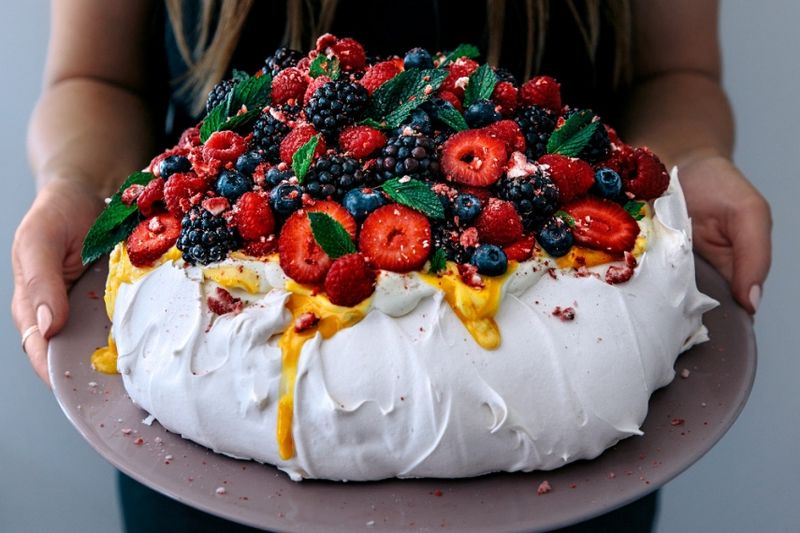
Both Australia and New Zealand claim to have invented this cloud-like meringue dessert topped with fresh fruit and whipped cream. Named after Russian ballerina Anna Pavlova, it’s as elegant as its namesake.
My first pavlova experience happened during Christmas in Sydney – the perfect summer dessert with its light texture and fresh berries. The contrast between the crisp exterior and marshmallow-soft interior creates a delightful textural experience.
Making the perfect pavlova requires patience and precision. Locals often debate whether passion fruit, kiwi, or berries make the best topping, but I think the combination of all three is unbeatable!
7. Gulab Jamun in India
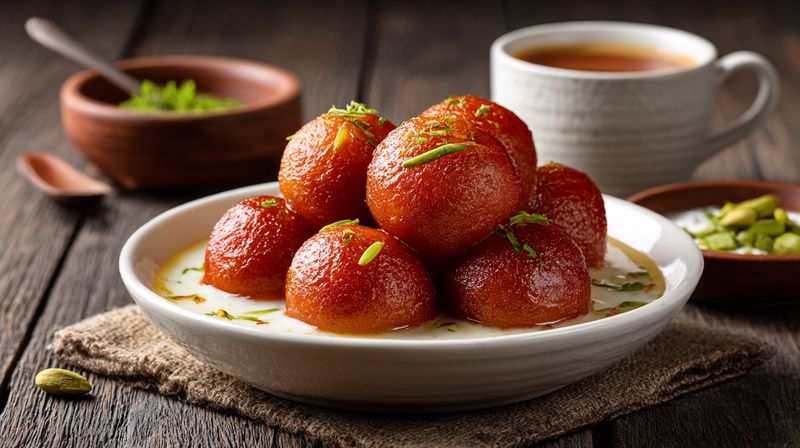
These golden-brown milk solid dumplings soaked in rose-scented syrup are pure indulgence! My first bite into a warm gulab jamun at a Delhi sweet shop was a revelation – soft, spongy, and incredibly aromatic.
During Diwali and other Indian celebrations, these sweet treats are absolutely essential. The name literally translates to “rose berry” because of their round shape and floral syrup.
Some regions serve gulab jamun with a scoop of ice cream for a delicious hot-and-cold contrast. If you’re visiting India, skip the pre-packaged versions and head to a local mithai (sweet) shop where they’re made fresh daily.
8. Tiramisu in Italy
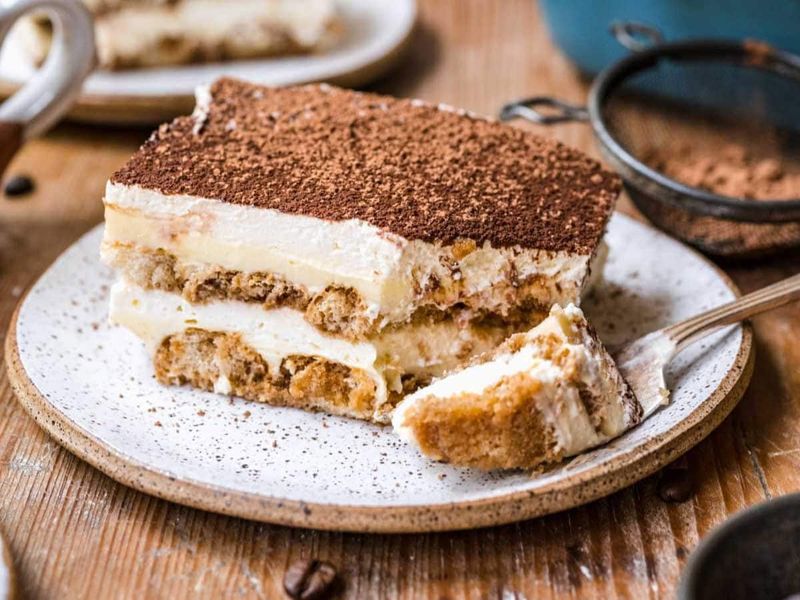
Coffee lovers rejoice! This iconic Italian dessert combines espresso-soaked ladyfingers with mascarpone cream and a dusting of cocoa powder. The name literally means “pick me up” – a perfect description for this energizing treat.
During my visit to Venice, I discovered that every Italian family seems to have their own secret tiramisu recipe. Some add marsala wine or rum to the coffee, while others insist on keeping it alcohol-free.
The best tiramisu has distinct layers that you can see when it’s served. Despite its fancy reputation, this dessert was only created in the 1960s in the Veneto region, making it relatively new compared to other Italian classics.
9. Stroopwafels in the Netherlands
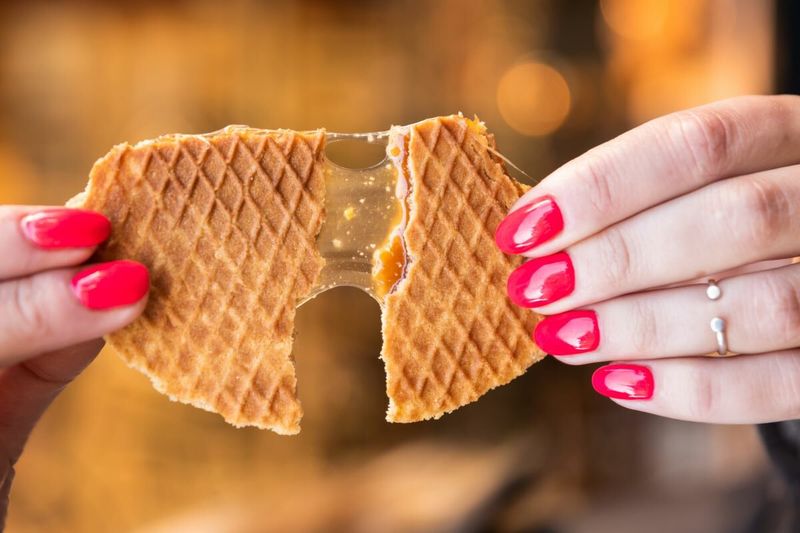
Have you ever placed a thin waffle cookie on top of your hot coffee and watched the caramel inside slowly melt? That’s the Dutch way to enjoy stroopwafels, and it’s absolutely genius!
Walking through Amsterdam’s street markets, the scent of freshly made stroopwafels is irresistible. These thin waffle sandwiches filled with caramel syrup originated in Gouda in the late 18th century as a way to use leftover breadcrumbs and spices.
While packaged versions make great souvenirs, nothing compares to watching artisans press the dough between waffle irons and skillfully slice and fill them while still hot. The contrast between crispy waffle and gooey center is simply perfect.
10. Mango Sticky Rice in Thailand
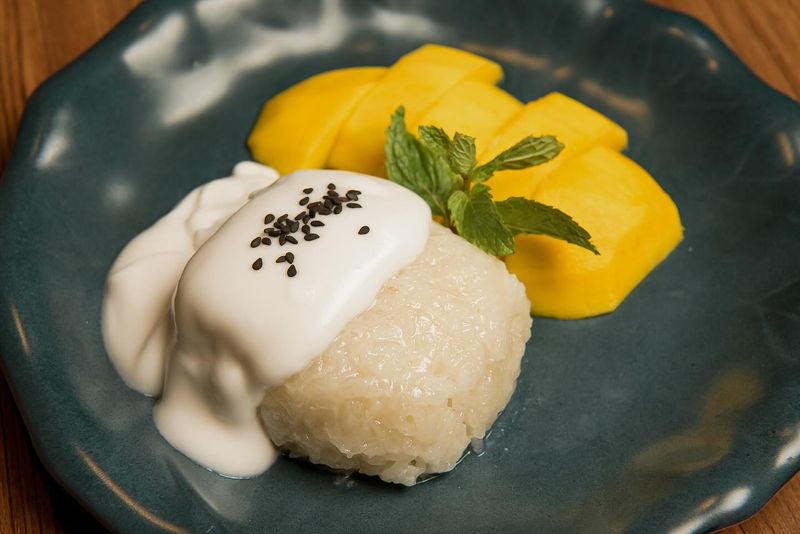
Thailand’s perfect combination of sweet glutinous rice, fresh mango, and coconut cream creates a dessert that’s both refreshing and satisfying. My first taste of this treat from a Bangkok street vendor changed my perception of rice forever!
The best time to enjoy mango sticky rice is during Thailand’s mango season (April to June) when the fruit is at its sweetest. Look for the golden-yellow Nam Dok Mai mangoes for the authentic experience.
Locals often add a sprinkle of toasted mung beans or sesame seeds for extra texture. While it’s traditionally a dessert, I’ve been known to eat it for breakfast too – it’s that good!
11. Crème Brûlée in France
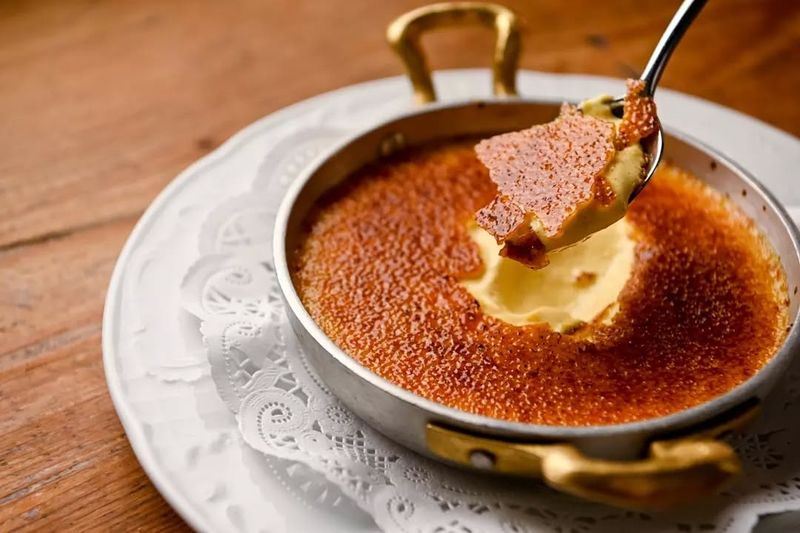
The satisfying crack of caramelized sugar giving way to silky custard makes French crème brûlée a textural masterpiece. My first experience with this classic dessert in a Parisian bistro was nothing short of magical.
Dating back to the 17th century, this seemingly simple combination of cream, vanilla, sugar, and eggs requires perfect technique. The best versions have a paper-thin layer of caramelized sugar that shatters with just a gentle tap of your spoon.
Traditional French chefs insist on using only vanilla bean, never extract, for the most authentic flavor. While fancy restaurants may add lavender or other infusions, I prefer the classic version that lets the quality ingredients shine.
12. Alfajores in Argentina
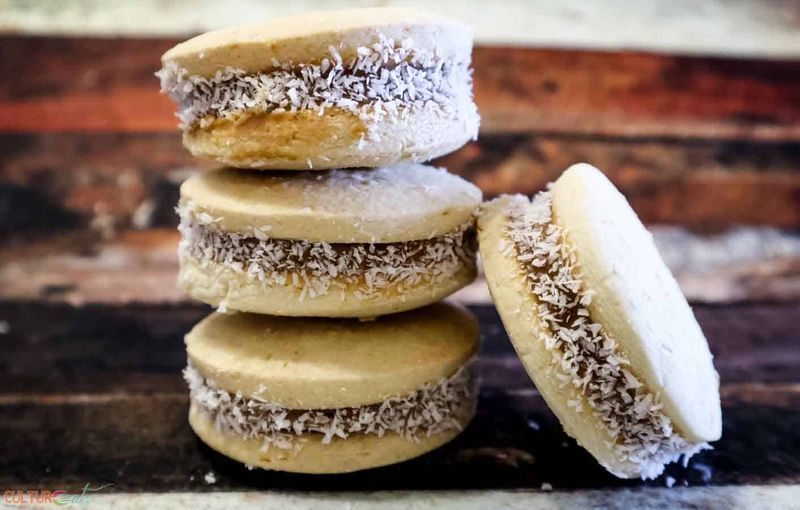
Imagine two buttery shortbread cookies sandwiching a generous layer of dulce de leche (caramelized milk) – that’s the magic of Argentinian alfajores. My first bite into one at a Buenos Aires café left me instantly hooked.
These treats have Spanish and Arab influences but have become quintessentially South American. The cookies practically melt in your mouth, creating the perfect backdrop for the rich dulce de leche filling.
Many varieties exist throughout Argentina, some rolled in coconut or dipped in chocolate. They pair perfectly with yerba mate tea for an authentic afternoon snack. I always bring home a box as souvenirs, though they rarely survive the flight!
13. Black Forest Cake in Germany
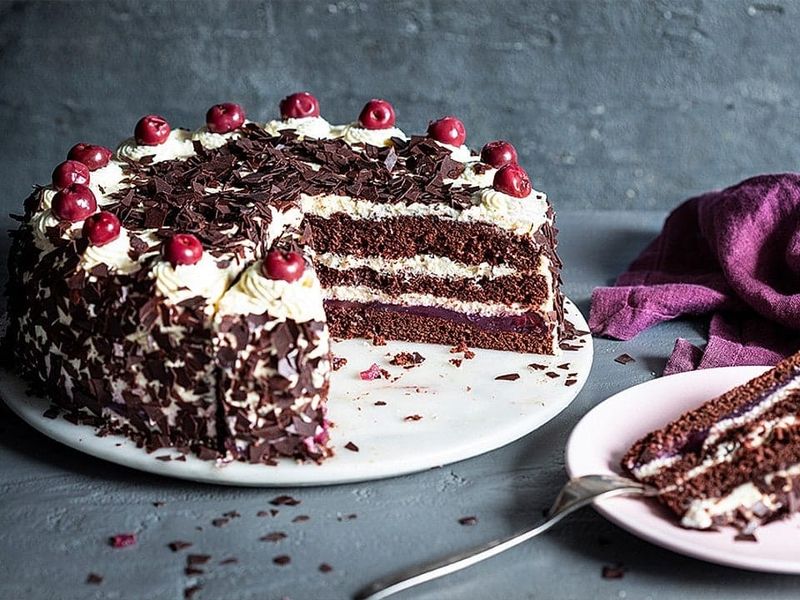
Germany’s famous Schwarzwälder Kirschtorte (Black Forest Cake) combines chocolate cake, whipped cream, cherries, and a good splash of cherry schnapps. My first slice in a traditional café in the actual Black Forest region was an unforgettable experience.
Unlike many American versions, authentic German Black Forest Cake isn’t overly sweet. The tartness of the cherries and slight bitterness of the chocolate create a beautiful balance with the light whipped cream.
The cake gets its name from the Black Forest region where the cherry schnapps (Kirschwasser) originates. According to German law, a cake cannot be called Schwarzwälder Kirschtorte without this specific alcohol – that’s how serious they are about authenticity!
